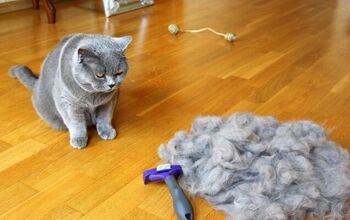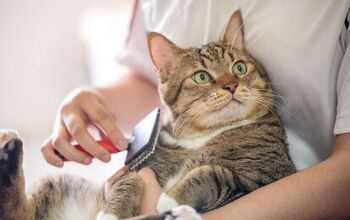Why is My Cat Not Grooming?

It’s a subtle shift that’s often easy to miss in the busy hustle and bustle of our days, but when your cat suddenly stops meticulously grooming themselves, it could be a red flag that something’s happening that requires your attention. For cats, grooming isn’t merely about maintaining a pristine appearance; it’s essential to their health, hygiene, and overall well-being. A sudden change in this self-care behavior could indicate anything from mild discomfort to a serious underlying medical concern.
This post will share the reasons why your cat might be grooming less, what steps you can take to make them feel more comfortable, and, most importantly, when it’s time to seek immediate professional veterinary help.
Why Grooming Matters
For cats, grooming serves many key functions, beginning with basic hygiene. Through their meticulous licking, cats remove loose fur, dirt, and any debris clinging to their coat, keeping themselves both clean and comfortable.
Beyond just cleanliness, grooming helps to regulate their body temperature. Cats can use evaporative cooling to help dissipate heat and cool themselves down by spreading saliva across their fur. This is especially important during the warmer summer days.
It’s also fundamental for skin health, as their tongues help to distribute natural oils. This keeps their skin moisturized while preventing dryness and irritation.
Additionally, grooming can be a powerful social tool. When cats groom one another, it’s a way of communicating affection, trust, and social bonding. Psychologically, self-grooming has been shown to be calming, a routine behavior cats often use to reduce stress and anxiety.
A healthy cat will typically groom themselves several times throughout the day, dedicating considerable time to cleaning every part of their bodies. Their barbed tongues act like tiny combs that untangle fur and remove debris. Their teeth also help with more stubborn knots. Finally, their paws are often moistened with saliva and used as a washcloth to help with harder-to-reach spots like the face and behind the ears.
Causes for Decreased Grooming
When your otherwise meticulously clean cat suddenly starts to neglect their grooming routine, it’s a red flag that you don’t want to ignore. This change can stem from many factors, ranging from environmental stressors to severe underlying medical conditions. Understanding these potential causes is the first step in getting the help and relief they need.
Medical reasons
Often, a change in grooming habits is a direct symptom of feelings of pain or discomfort, making it difficult to physically move in the ways necessary to groom themselves. If a cat is hurting, the last thing they’ll want to do is bend, stretch, or twist into the various necessary positions. This pain can manifest in many ways:
- Arthritis or joint pain, especially common in older cats, can make movement painful.
- Dental problems like gum disease, tooth resorption, or abscesses can cause severe pain in the mouth or jaw, making licking unbearable.
- Spinal issues or injuries might restrict flexibility and cause discomfort when trying to reach certain areas.
- Abdominal pain or organ issues can make a cat feel unwell, leading to a disinterest in self-care and grooming.
- Wounds, abscesses, or skin infections are often painful to the touch, causing a cat to avoid grooming the affected area, or even grooming altogether due to generalized discomfort.
Beyond localized pain, a cat’s grooming habits can suffer due to various underlying illnesses. Systemic diseases can leave your cat unwell, leading to lethargy or a lack of energy for typical daily activities (like grooming). Possible illnesses include:
- Kidney disease, which can cause nausea and weakness.
- Diabetes, leading to dehydration and lethargy.
- Hyperthyroidism, which can cause weight loss and muscle weakness despite an increased appetite.
- Various forms of cancer, which can cause widespread discomfort and poor health.
- Simple fevers or general feelings of unwell from a common infection can also impact your cat’s ability to groom.
Obesity can also significantly impact your cat’s ability to move as needed for grooming. Overweight cats often struggle to reach certain areas of their body, particularly their back and hindquarters, making thorough grooming impossible. The extra weight can also contribute to existing joint pain, further limiting their mobility and desire to groom.
If your cat is experiencing nausea or gastrointestinal problems, they will likely feel unwell enough to decrease their appetite and cause lethargy, leading to a disinterest in grooming.
Finally, neurological issues can directly impact a cat’s ability to groom. Cognitive decline in older cats, similar to dementia in humans, can lead to a forgetfulness of routine behaviors, including grooming. If your cat has suffered a stroke or other neurological events, it may affect their motor skills and coordination, making the precise movements required for grooming difficult or impossible.
Environmental and Behavioral Factors
While medical conditions are the most common cause, a cat’s emotional state and environment also play a crucial role in their grooming habits. Stress and anxiety can significantly impact normal behaviors, including grooming. Cats are creatures of habit, and disruptions to their routine can be incredibly upsetting. Common stressors include:
- Significant changes in routine, such as introducing a new pet, a new baby, or moving to a new home.
- Loud noises, home renovations, or ongoing conflict in the home can create a constant state of unease.
- Separation anxiety can also manifest in neglect of self-care. Prolonged stress can profoundly impact a cat’s overall well-being, leading them to neglect self-care activities like grooming.
Similarly, depression or grief can cause a cat to withdraw and lose interest in their usual routines. This can occur after the loss of a companion animal or a human family member, or following other major life changes that deeply impact their emotional state.
Aging naturally brings a decline in various bodily functions. Even without specific diseases, older cats often experience behavior changes. They may experience:
- A general decline in energy levels, making the effort of grooming less appealing.
- The onset of arthritis and other age-related discomforts make the physical movements required to groom difficult.
- Cognitive dysfunction, as mentioned earlier, can also contribute to forgetfulness or inability to perform grooming routines.
Finally, while it’s less common for a prolonged failure to keep up with grooming, extreme heat or humidity can impact the thoroughness of a cat’s self-care. In very warm conditions, a cat may focus more on cooling behaviors, such as lying on cool surfaces or panting, rather than engaging in regular grooming sessions. However, this is unlikely to cause them to completely stop grooming unless accompanied by other symptoms.
What Can You Do to Keep Your Cat Comfortable?
Noticing a change in your cat’s grooming habits can be worrying, but there are several steps you can take to support their comfort and well-being. Careful observation and gentle intervention can make a significant difference in your cat’s quality of life.
Watch for Subtle Signs of Trouble
Before jumping to conclusions, you should take time for careful observation. Start by keeping a log of what you notice. When did you first realize your cat was grooming less? Are there specific areas they’re neglecting, like their back or hindquarters, or do the changes impact grooming in general?
Jot down any other accompanying symptoms, no matter how minor they may seem. This could include changes in their appetite or litter box habits, decreased activity, a noticeable limp, or unusual vocalization. These details will be incredibly valuable at your appointment with your veterinarian.
Regular Brushing
If your cat isn’t grooming themselves, their fur can quickly become matted, uncomfortable, and even become a breeding ground for skin issues. One of the most direct ways you can help is through regular brushing. Introduce brushing slowly and gently, using a soft brush appropriate for their coat type. Focus on the areas they can’t reach, like their back or under their chin.
The goal is to make this a positive experience, so use gentle strokes, offer treats, and give your cat plenty of praise. If your cat resists, don’t force it. Even short, frequent brushing sessions are better than none.
You can use warm cloth wipes or dedicated pet grooming wipes for a quick clean, especially around their face and paws. If using a warm wipe, make sure the temperature is comfortable for them.
Creating a Comfortable Environment
A comfortable and stress-free environment can significantly impact your cat’s overall well-being. Ensure they have soft, easily accessible bedding where they can feel safe and relax. If they are experiencing aches and pains, consider an orthopedic bed that can offer the support needed for a comfortable sleep.
Make sure their food, water, and litter boxes are easily reachable. Consider getting a lower-sided litter box for older cats or those with mobility issues to reduce strain.
Minimizing stressors in the home, like loud noises or sudden changes to their home environment, can significantly contribute to their comfort. If you are currently doing home renovations or know there is a short-term concern with loud noise approaching (like fireworks or thunderstorms), consider placing your cat in a room as far from the sound as possible. You may also wish to use calming treats or a calming supplement to help them through this time.
Nutrition and Hydration
Pay close attention to your cat’s nutrition and hydration. Ensure they are eating and drinking adequately. If they struggle with dry food, offering wet food can encourage them to eat more and help with hydration. You may also wish to introduce a water fountain, which can entice some cats to drink more.
If your cat is experiencing joint aches and pains, you may wish to try a joint or mobility supplement. However, you should talk with your veterinarian before introducing a new supplement into their routine, especially if they are experiencing any medical conditions.
Mental Stimulation
Finally, consider ways to provide mental stimulation if your cat's mobility allows. Gentle playtime with interactive toys can help keep their spirits up and provide a distraction, contributing to their overall well-being and helping reduce stress. Other opportunities to introduce enrichment into your cat’s life include food puzzles, cat trees, and cat shelves. However, if they are in pain or very lethargic, prioritize rest and comfort over play.
When to Contact Your Vet
Knowing when to seek professional help for your cat is a crucial part of being a loving cat parent. A decline in grooming can sometimes signal a serious underlying medical problem, and getting started with veterinary care as soon as possible can make a significant difference in the outcome.
Immediate Veterinary Care
You should call your vet for immediate attention if you notice a sudden and complete stop to your cat’s grooming habits, especially if it’s accompanied by other severe symptoms. These red flags include:
- Vomiting
- Diarrhea
- Severe Lethargy
Difficulty breathing is always an emergency. Additionally, look for any obvious signs of pain, such as limping, crying, or persistent hiding. If your cat has not eaten or drunk for more than 24 hours, or if they have severe skin issues or open wounds that are clearly visible, it warrants an immediate call to your vet. These symptoms are often signs of a critical health problem that needs to be assessed and treated as soon as possible for the best prognosis.
Schedule a Vet Appointment
Not every situation will require immediate care, but these less severe situations may still warrant an appointment to get to the bottom of the problem. This is appropriate if you notice a gradual decrease in grooming over time, rather than a sudden stop.
It’s also important you make an appointment with your vet if you notice any of the medical reasons we discussed earlier, such as signs of arthritis, dental problems, or other underlying medical issues. If your cat seems generally unwell or “off,” it’s a good idea to get them checked.
Finally, if you’ve tried the supportive measures at home, like brushing and creating a more comfortable environment, and there’s no improvement in your cat’s overall demeanor and grooming habits, it’s time to get your vet involved. They can work with you to pinpoint the reasons for these changes in behavior and figure out the best plan of action moving forward.
What to Expect at the Vet
When you bring your cat to the vet, they will perform a thorough physical exam. Be prepared to discuss your observations and your cat’s medical history. This is where your diligent log-keeping will be helpful! Based on their findings, your vet may recommend diagnostic tests like blood work, urinalysis, x-rays, or an ultrasound to pinpoint the cause. It’s incredibly important to share all details, even if they seem minor or unrelated. Every piece of information can help your vet reach a diagnosis.
Don’t Overlook the Subtle Warning of Changes in Grooming
Ultimately, a change in your cat’s grooming habits is a significant warning sign of possible trouble. You know your cat best, and it’s a testament to your strong bond that you noticed this shift. Trust your instincts when something feels “off,” and never hesitate to contact your veterinarian for help. Giving your cat the best possible quality of life means being observant and noticing even the most subtle communications. By addressing the problem quickly, you ensure they get the care and comfort they deserve.
Join the PetGuide community. Get the latest pet news and product recommendations by subscribing to our newsletter here.

Britt Kascjak is a proud pet mom, sharing her heart (and her home) with her “pack” which includes her husband John, their 2 dogs – Lucifer and Willow – and their 3 cats – Pippen, Jinx, and Theia. She has been active in the animal rescue community for over 15 years, volunteering, fostering and advocating for organizations across Canada and the US. In her free time, she enjoys traveling around the country camping, hiking, and canoeing with her pets.
More by Britt
























